5 Paintings of Satan You Haven’t Seen Before
Paintings of Satan are a recurrent theme in art, ranging from religious portrayals to contemporary interpretations. As the symbolic representation of...
Errika Gerakiti 9 March 2024
To properly get into the Halloween mood we couldn’t help but dedicate this article to the most famous creepy paintings! Forget watching horrors on Netflix—here we have something that will make your jaw drop. Happy Halloween, full of scary art history!
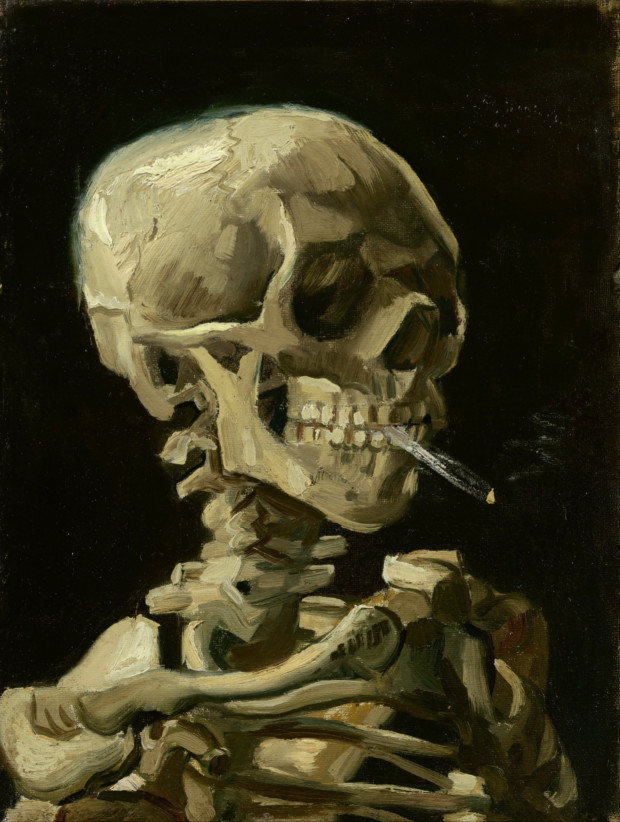
Judging from his personal story you wouldn’t tell that Van Gogh had a sense of humor. But it seems that he did, this skeleton with a lit cigarette in its mouth is a juvenile joke. Van Gogh painted it in early 1886 while studying at the art academy in Antwerp. Drawing skeletons was a standard exercise at the academy–and something serious to the bone.
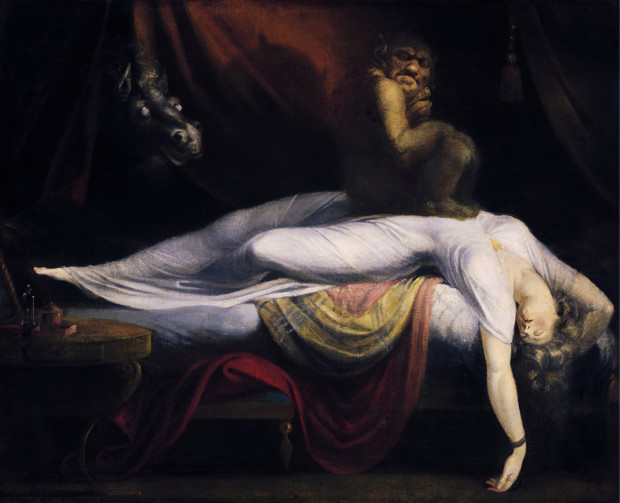
This painting’s dreamlike and haunting erotic evocation of infatuation and obsession was a hugely popular success. After its first exhibition at the 1782 Royal Academy of London, critics and patrons reacted with horrified fascination. The work became widely popular, to the extent that it was parodied in political satire and an engraved version was widely distributed. In response, Fuseli produced at least three other versions. As you can see it’s very Romantic–in terms of the subject, so typical for Romanticism.
If you want to learn more, check this out.
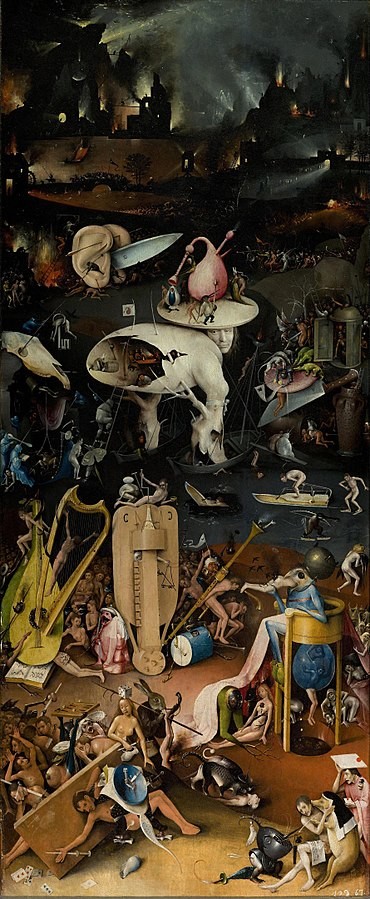
This masterpiece has so many scary details, that you must read the entire story on it. No one really knows why Bosch imagined the world in this particular way. It seems that he was sane. In the part with Hell, against a backdrop of blackness, prison-like city walls are etched in inky silhouettes against areas of flame. Meanwhile, everywhere human bodies huddle in groups, amass in armies or are subject to strange tortures at the hands of oddly-clad executioners and animal demons. A real nightmare. Don’t look at this masterpiece closely just before you go to sleep.
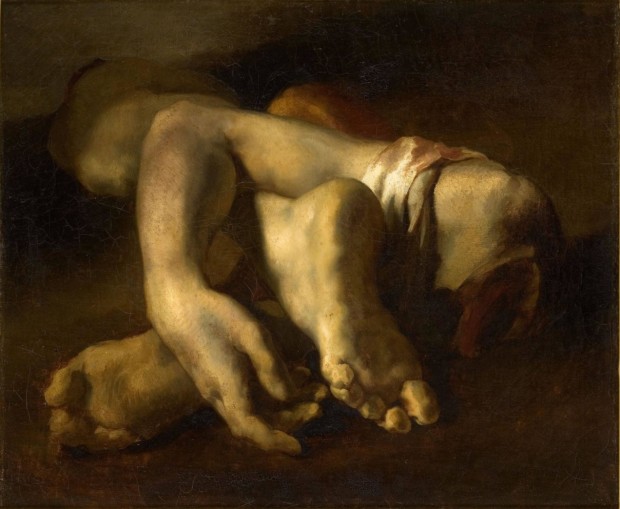
Yes, this is what you think it is–Théodore Géricault borrowed human remains from the morgue to paint them. Anatomical Pieces cannot be categorized as an artistic study of human anatomy because the remains are separated from the body, thus they have no value for this purpose. As we are all terrified by the idea of death and knowing that our body is eventually going to be the object of decomposition and oblivion, Anatomical Pieces shocks us for its morbidity. In this period Géricault was also commissioned for a series of ten portraits of patients who were hospitalized in La Salpêtrière, the mental asylum from Paris–they are pretty creepy too.
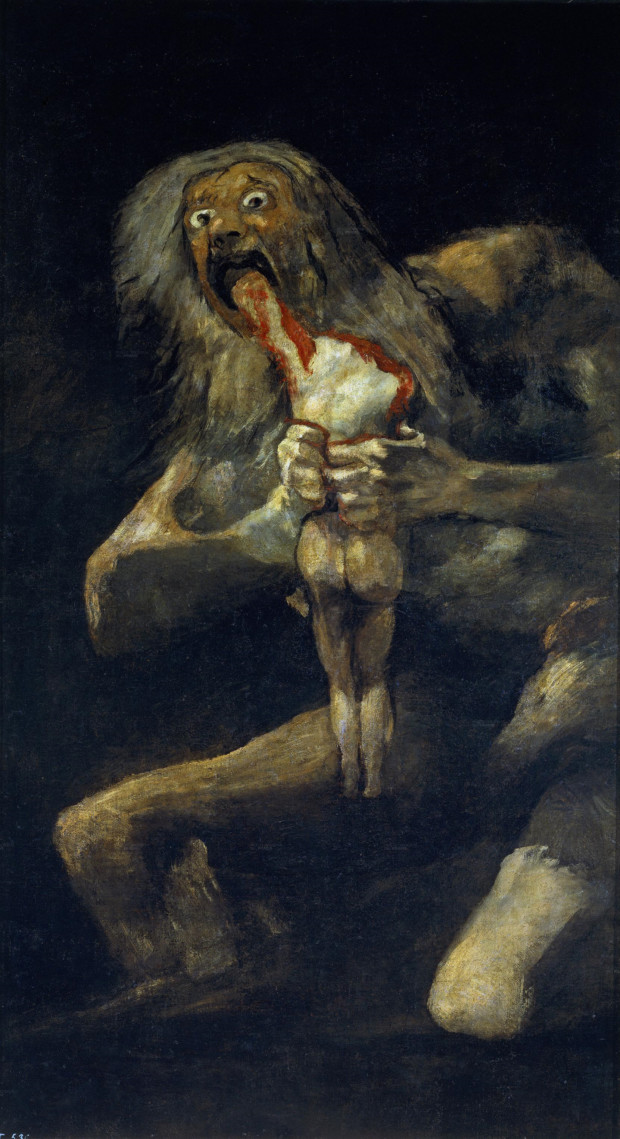
Saturn Devouring His Son is the name given to this creepy painting by Spanish artist Francisco Goya. According to the traditional interpretation, it depicts the Greek myth of the Titan Cronus (in the title Romanized to Saturn). Fearing that he would be overthrown by one of his children, he ate each one upon their birth. The work is one of the 14 Black Paintings that Goya painted directly onto the walls of his house sometime between 1819 and 1823 when he was already 73 years old and deaf. The Black Paintings were never meant for public display and they reflect his darkening mood with intense scenes of malevolence and conflict. Goya had seen multiple horrible war scenes in his life, some of which he even engraved in his Disasters of War series.
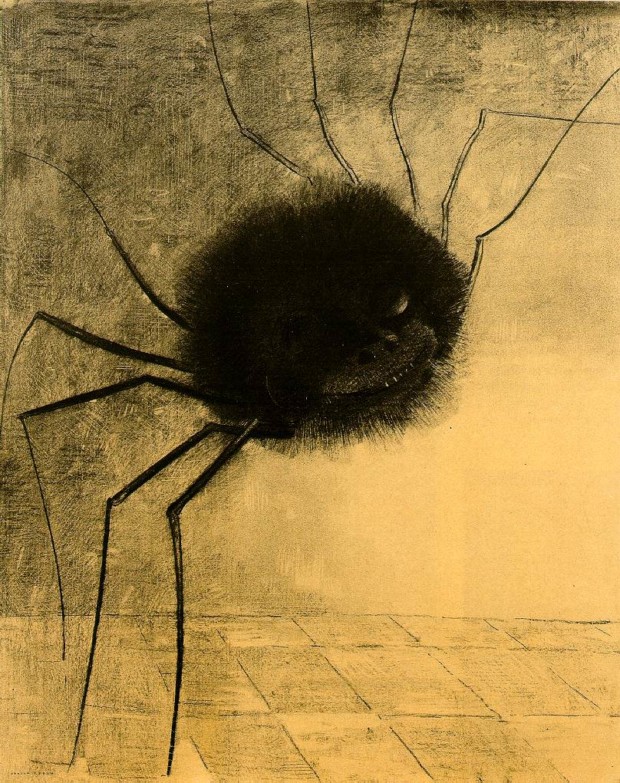
Odilon Redon had a weird period in his life when he painted or drew things like this smiling spider. The spider looks a bit cynical – maybe he knows some kind of mystery. Cyclopes, macabre animals, and plants with human heads were the creatures in Odilon Redon’s noirs which are equally unsettling and fascinating.
OK, the Smiling Spider isn’t as spooky as it could be, comparing it to the rest of the masterpieces in this article. But for someone with arachnophobia, it’s probably the worst of them all (sorry if you have arachnophobia!).
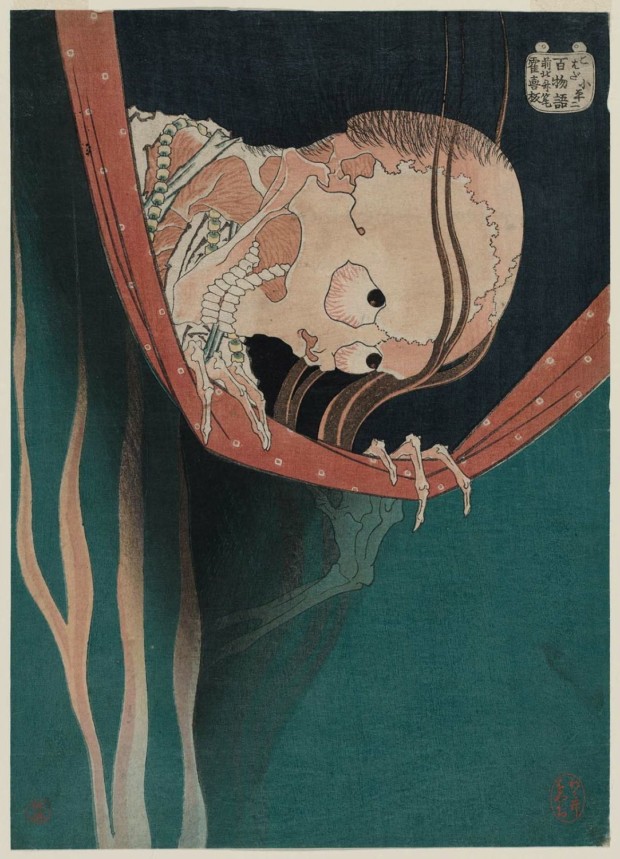
Hokusai created so many creepy woodcuts that it was a real challenge to choose just one. Here he presents a scene from a Japanese legend, in which a murdered actor rises from the dead to spook his wife and her lover. The actor looks like a quite handsome zombie, imagined as a skeleton with skin and hair still clinging to his skull. Charming…
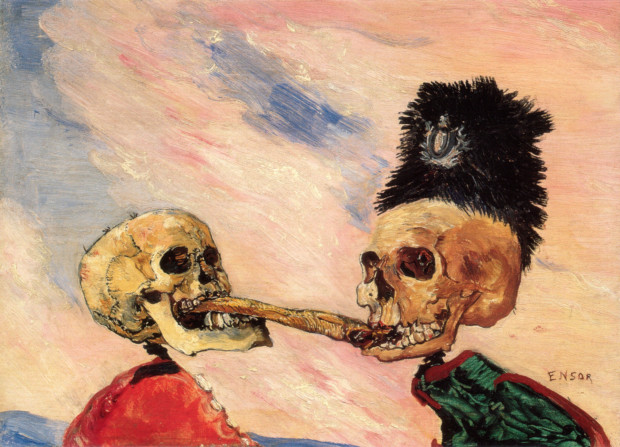
James Ensor was another painter who loved the macabre. This creepy or quirky painting supposedly depicts his critics (the skeletons) tearing him (the fish) apart. What the furry hat on the right skeleton was supposed to mean, remains a mystery. I hope that at least the herring was tasty.
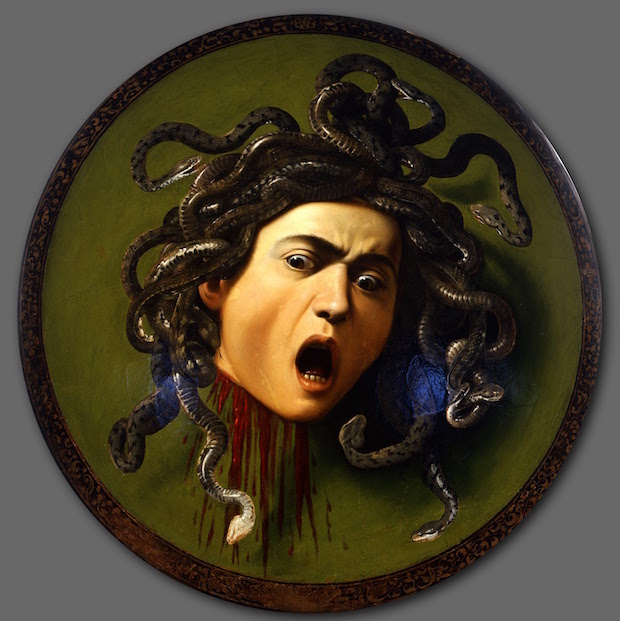
In Greek myth, Perseus used the severed snake-haired head of the Gorgon Medusa as a shield with which to turn his enemies to stone. By the 16th century, Medusa was said to symbolize the triumph of reason over the senses; and this may have been why Cardinal Del Monte commissioned Caravaggio to paint Medusa as the figure on a ceremonial shield, presented in 1601 to Ferdinand I de Medici, Grand Duke of Tuscany. The poet Marino claimed that it symbolized the Duke’s courage in defeating his enemies.

Francis Bacon had many demons. This work shows a distorted version of the Portrait of Innocent X painted by Spanish artist Diego Velázquez in 1650. As with many other of Bacon’s popes, the painting is dominated by purple vestments. Bacon’s palette changed in 1953 and his paintings became darker, the earlier blues were replaced by velvet purples while his overall tone became more nocturnal.
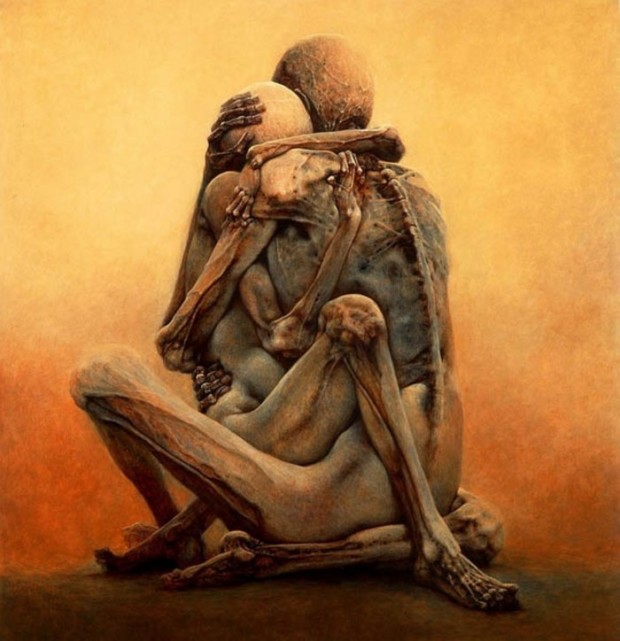
Well, I could put here any painting created by Beksinski. This Polish artist, who was murdered in his house in 2005, is known for his surrealist-expressionist works. According to Mexican film director Guillermo del Toro:
In the medieval tradition, Beksinski seems to believe art to be a forewarning about the fragility of the flesh – whatever pleasures we know are doomed to perish – thus, his paintings manage to evoke at once the process of decay and the ongoing struggle for life. They hold within them a secret poetry, stained with blood and rust.
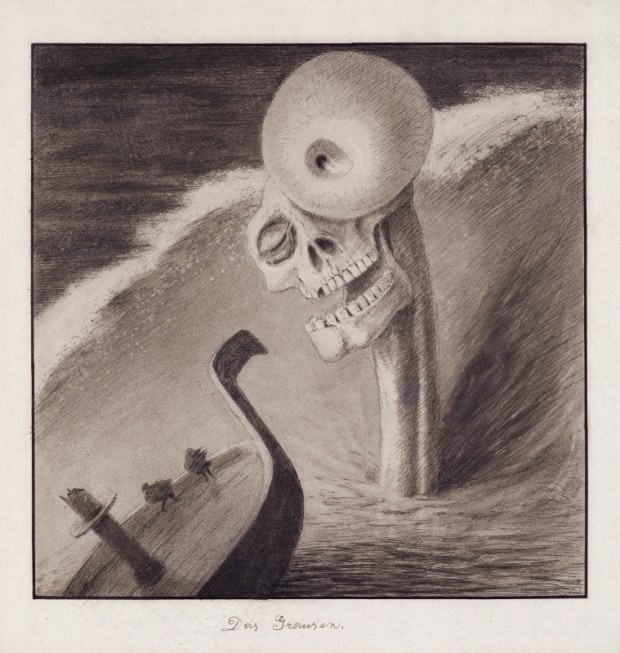
Alfred Kubin was an Austrian printmaker, illustrator, and occasional writer. Kubin is considered an important representative of Symbolism and Expressionism and is noted for dark, spectral, symbolic fantasies, often assembled into thematic series of drawings. He illustrated the works of Edgar Allan Poe, E.T.A. Hoffmann, and Fyodor Dostoevsky, among others. Kubin also illustrated the German fantasy magazine Der Orchideengarten.
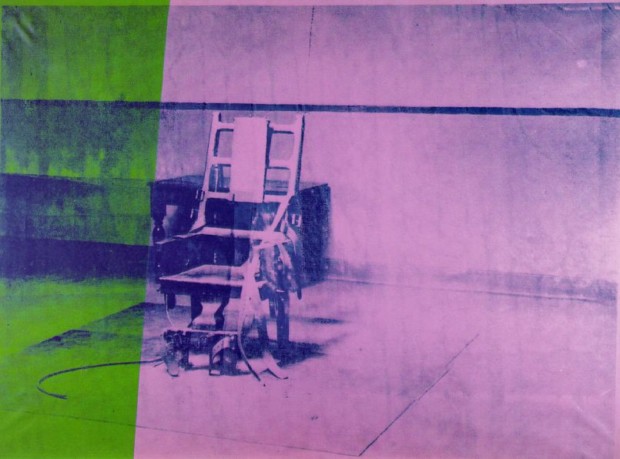
Created in 1967, the Stockholm Big Electric Chair is part of a series of works by Andy Warhol depicting an electric chair. Death by electrocution was a controversial subject in New York City, where the artist lived and worked, especially after the last two executions at Sing Sing Correctional Facility in 1963. Warhol obtained a photograph of the empty execution chamber, which became the basis for this series.
DailyArt Magazine needs your support. Every contribution, however big or small, is very valuable for our future. Thanks to it, we will be able to sustain and grow the Magazine. Thank you for your help!